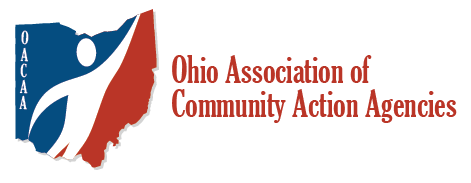For those who have not spent a lot of time reading through ROMA Next Generation documents, an easy way to describe the proposed changes is to review the current Information Survey (IS) Annual Report. Currently, the IS requires CAAs to provide outcome data related to National Performance Indicators (NPIs) under six Results Oriented Management and Accountability (ROMA) goals. Under ROMA Next Generation, CAAs will report services and outcomes organized under three national goals and NPIs, which are arranged into domains (e.g. employment, housing, etc.).
Recently, I was asked to join a group of ROMA practitioners from around the country to discuss ROMA Next Generation prior to the final OMB comment period. Representatives from local CAAs, state associations, state CSBG Offices as well as OCS, NASCSP, NCAF, and the Partnership were asked to consider five major areas of concern that were identified during the second OMB comment period. These five areas included:
- Community level measures, Collective Impact, and status report
- Organizational Standards
- Agency capacity goal
- State-level analysis of annual report data
- Time/cost burden
Participants engaged in solution-based discussions surrounding the 130 comments received between June and August 2016. Both small group and large group formats were utilized to facilitate thoughtful conversations.
A great deal of time was spent discussing how to report community level measures such as job creation, development of housing units or community health improvements. Much of the feedback expressed during the second comment period focused on the difficulty in comparing CAA activity to community-wide social indicators like high school graduation rates or recidivism rates. Small groups talked through the challenges of determining how to adequately and accurately present data that indicates community level change over time, and how to report on efforts where multiple stakeholders are engaged at varying levels of the initiative.
While programmatic reporting dominated many of the conversations, the group also wrestled with how to report results from the Organizational Standards. In the first two proposed versions of ROMA Next Generation, States would report only the number of agencies who met 100% of the Standards with an all-or-nothing approach. Participants considered other options including reporting the level at which all agencies met the Standards, or breaking it down based on category.
Participants also discussed adding a fourth national ROMA goal regarding agency capacity and also included whether state CSBG administrators should be required to analyze aggregate data from CSBG-eligible entities in addition to reporting the raw numbers. Finally, participants discussed whether the time burden (OMB required terminology) was accurate and what the reporting requirements would mean for agencies once put into practice.
All of the feedback from the group was recorded and will be considered prior to the release of next version of ROMA Next Generation for the final 30-day OMB comment period. OCS indicated the next version would be available for review in mid-October. To learn more about the ROMA Next Generation efforts and process, click here.
Josh Summer is the Development Director at OACAA. Josh has over a decade of experience in organizational development and planning. He is a Certified ROMA trainer, Technology of Participation (ToP) certified strategic planner and facilitates board training and poverty simulations. Josh has presented organizational sustainability at local, regional, and national conferences. He is a graduate of the University of Wisconsin Madison’s School of Human Ecology where focused his studies on financial literacy and consumer education. Josh is responsible for creating new partnerships with community organizations, other social services providers, government entities, corporation and potential funders. He is also responsible for funding research, grant writing, and program design and evaluation.
